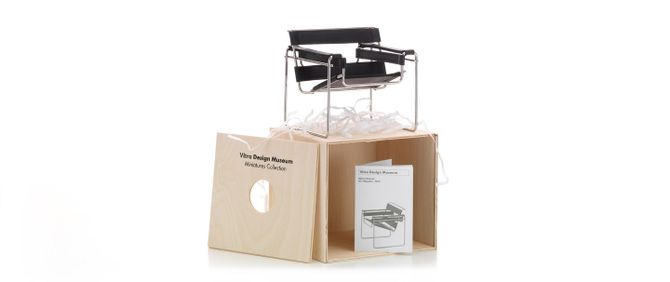
Miniatures B3 Wassily
Marcel Breuer, 1925
Marcel Breuer replaced the massive upholstered corpus of the traditional club chair with a skeletonlike construction made out of bent steel tubing, thereby overcoming the physical weightiness of conventional seating. He exploited the elasticity of the material, complementing it with tautly stretched fabric strips of reinforced canvas for the seat and back. The B3 did not acquire the name »Wassily« until the beginning of the sixties, when the Italian furniture producer Dino Gavina purchased the manufacturing rights: Marcel Breuer had designed the armchair for the house of the painter Wassily Kandinsky, who taught at the Bauhaus from 1922 until 1933.
Information
- Scale: 1:6, 116 x 123 x 127 mm
- Material: nickel-plated tubular steel, black leather
Miniatures Collection
For over two decades, the Vitra Design Museum has been making miniature replicas of milestones in furniture design from its collection. The Miniatures Collection encapsulates the entire history of industrial furniture design – moving from Historicism and Art Nouveau to the Bauhaus and New Objectivity, from Radical Design and Postmodernism all the way up to the present day. Exactly one sixth the size of the historical originals, the chairs are all true to scale and precisely recreate the smallest details of construction, material and colour. The high standard of authenticity even extends to the natural grain of the wood, the reproduction of screws and the elaborate handicraft techniques involved. This has made the miniatures into popular collector's items as well as ideal illustrative material for universities, design schools and architects.